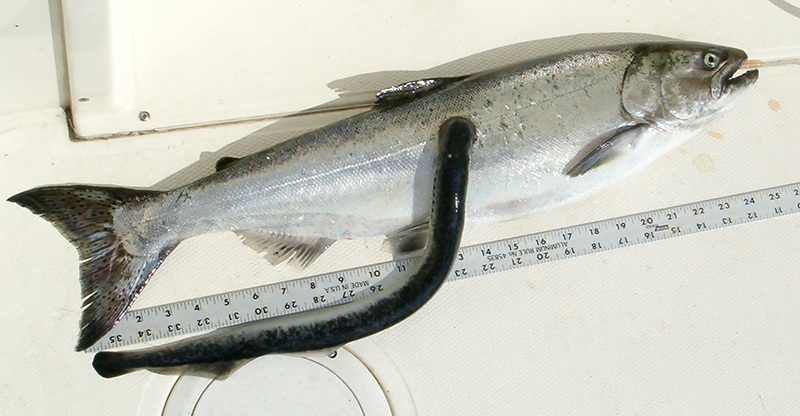Overview
Sea Lamprey are primitive, jawless fish native to the Atlantic Ocean. In 1921, lampreys appeared in Lake Erie for the first time, arriving via the Welland Canal, which was constructed for ships to avoid Niagara Falls on their way up the St. Lawrence Seaway. Shortly thereafter, sea lamprey quickly populated all of the upper Great Lakes.
The sea lamprey is an aggressive parasite with a toothed, funnel-like sucking mouth and rasping toungue which is used to bore into the flesh of other fishes to feed on their blood and body fluids. A single lamprey will destroy up to 40 pounds of fish during its adult lifetime. Sea Lamprey are so destructive that, under some conditions, only one out of seven fish attacked will survive. In the 1940’s and 1950’s, sea lamprey populations exploded in the Great Lakes.
Currently the Great Lakes Fishery Commission, in cooperation with Fisheries and Oceans Canada and U.S. Fish and Wildlife Service spend millions of dollars annually to control the sea lamprey population in the Great Lakes. Ongoing control efforts have been very sucessful, as a 90% reduction of sea lamprey populations in most areas has been achieved. This has created a healthier environment for fish survival and spawning.
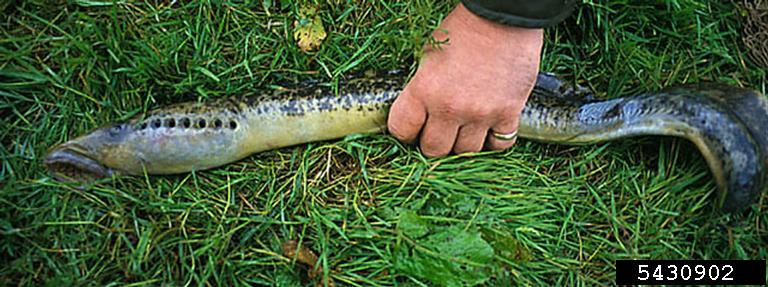
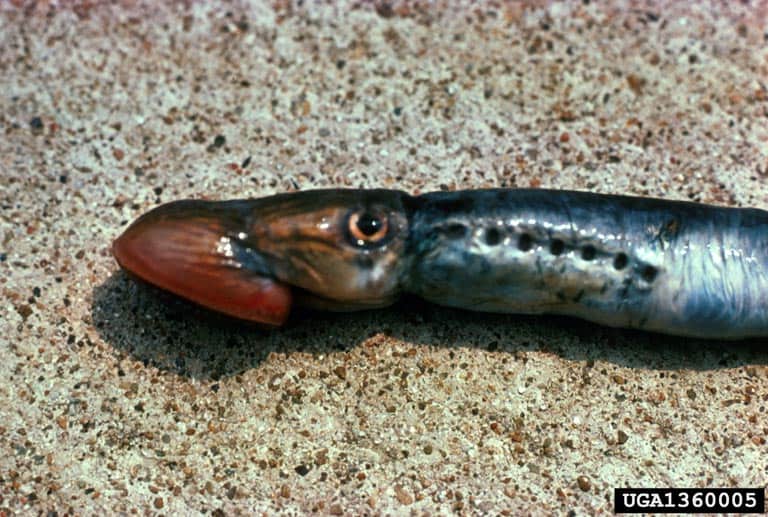
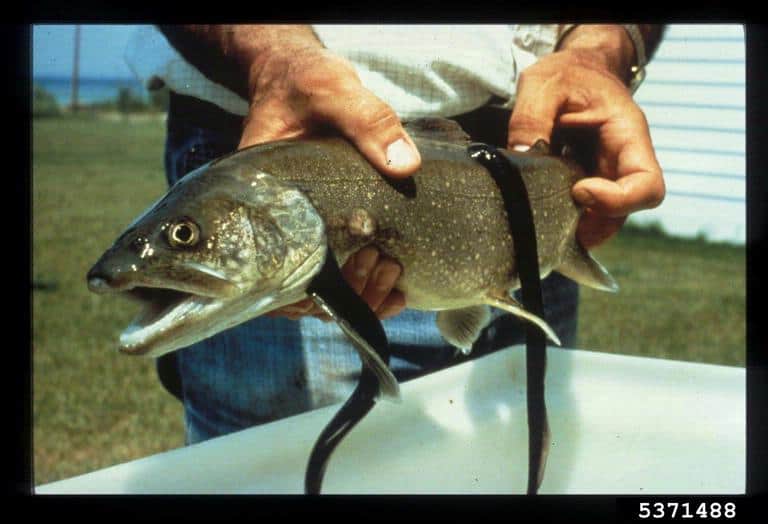
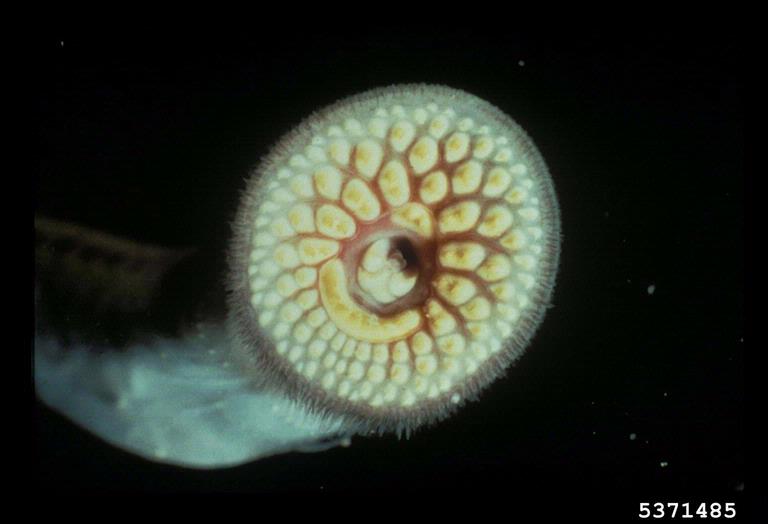
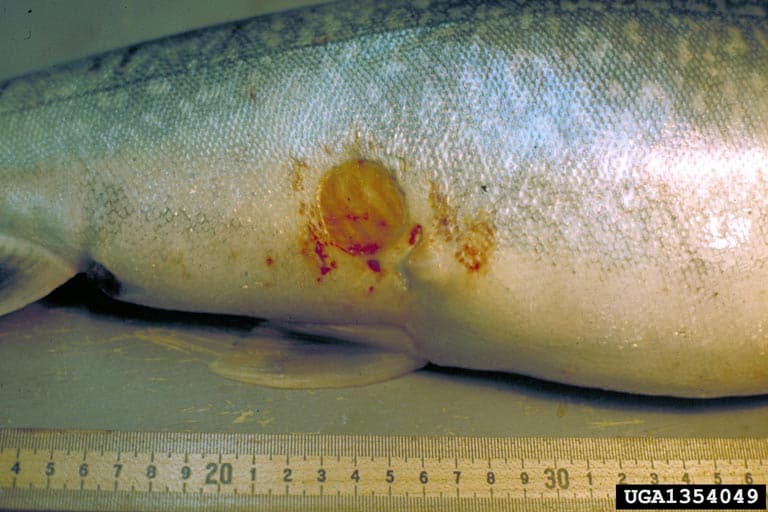
Identifying Characteristics
Control Methods
|
The Ontario Federation of Anglers and Hunters (OFAH)
May 13, 2009
This public service announcement describes the problems associated with the Great Lakes Sea Lamprey invasion, and how Canada and the United States have been able to control their numbers. Brought to you by the Ontario Federation of Anglers and Hunters and the Ontario Ministry of Natural Resources Invading Species Awareness Program. |

